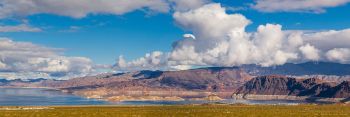Reservoirs: Difference between revisions
From ASDSO Dam Safety Toolbox
Rmanwaring (talk | contribs) (Created page with "__NOTOC__ ---- <!-- Delete any sections that are not necessary to your topic. Add pictures/sections as needed --> Reservoirs are artificial bodies of water impounded behind a dam for one or more intended purposes including water storage, flood protection, hydropower generation, or recreation. ==Components of a Reservoir== [Paragraph here] ==Life Cycle of a Reservoir== [Paragraph here] #Design and Construction of a Reservoir #O&M of a Reservoir #Decommission...") |
|||
| (12 intermediate revisions by 5 users not shown) | |||
| Line 1: | Line 1: | ||
__NOTOC__ | __NOTOC__ | ||
[[Category:Anatomy]] | |||
---- | ---- | ||
<!-- Delete any sections that are not necessary to your topic. Add pictures/sections as needed --> | <!-- Delete any sections that are not necessary to your topic. Add pictures/sections as needed --> | ||
Reservoirs are artificial bodies of water impounded behind a dam for one or more intended purposes including water storage, flood protection, hydropower generation, or recreation. | {{Picture | ||
|image= | |||
<!-- Add image file name (ex.image.jpg) --> | |||
reservoir-mead.jpg | |||
|link= | |||
<!--https://www.nps.gov/lake/planyourvisit/lake-mead.htm--> | |||
|caption= | |||
<!-- Add picture caption --> | |||
Lake Mead, a reservoir formed by the Hoover Dam on the Colorado River, is the largest reservoir in the United States by water capacity. | |||
(Image Source: National Park Service) | |||
}} | |||
Reservoirs are artificial bodies of water impounded behind a dam for one or more intended purposes including water storage, flood protection, hydropower generation, or [[recreation]]. | |||
==Components of a Reservoir== | ==Components of a Reservoir== | ||
[ | * [[Normal/Conservation Pool/Storage]] | ||
* [[Flood Pool/Storage]] | |||
* [[Emergency/Induced Surcharge Pool]] | |||
* [[Inactive/Dead Pool/Storage]] | |||
* [[Reservoir Rim]] | |||
* [[Sedimentation]] | |||
==Life Cycle of a Reservoir== | ==Life Cycle of a Reservoir== | ||
* [[Design and Construction of a Reservoir]] | |||
* [[O&M of a Reservoir]] | |||
* [[Decommissioning]] | |||
<!-- For information on notation for in text citations visit https://www.mediawiki.org/wiki/Help:Cite Or simply enclose the citation as shown <ref> citation </ref> in the location of the in text mention. Citations will automatically populate below--> | <!-- For information on notation for in text citations visit https://www.mediawiki.org/wiki/Help:Cite Or simply enclose the citation as shown <ref> citation </ref> in the location of the in text mention. Citations will automatically populate below--> | ||
Latest revision as of 21:29, 3 January 2024

|
| Lake Mead, a reservoir formed by the Hoover Dam on the Colorado River, is the largest reservoir in the United States by water capacity.
(Image Source: National Park Service) |
Reservoirs are artificial bodies of water impounded behind a dam for one or more intended purposes including water storage, flood protection, hydropower generation, or recreation.
Components of a Reservoir
- Normal/Conservation Pool/Storage
- Flood Pool/Storage
- Emergency/Induced Surcharge Pool
- Inactive/Dead Pool/Storage
- Reservoir Rim
- Sedimentation
Life Cycle of a Reservoir
Citations:
Revision ID: 7781
Revision Date: 01/03/2024
